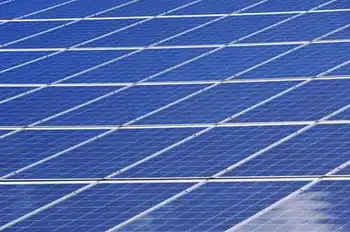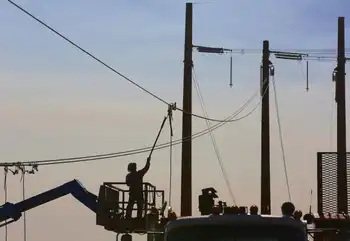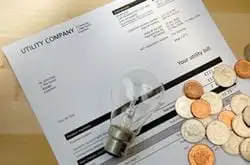Top 10 solar trends in 2009
Or, at least that's what companies are hoping for.
Here are the top stories of the year in the photovoltaic world, not in any order of importance:
1. Tumbling Prices, Hopes:
Makers of solar panels and their suppliers had to slash prices by as much as 50 percent as credit crunch caused market demand to shrunk quickly. Companies laid off workers, cut production, posted losses and tried to renegotiate contracts with suppliers and customers.
The market slowdown sparked a price war and complaints from German manufacturers that their Chinese rivals were undercutting them by selling their equipment at prices below production costs.
2.Why Become Manufacturers During Tough Times?
Raising money and building factories are supposed to be milestones for a startup company. Recession has forced some companies to reevaluate their business plans.
Innovalight, based in Sunnyvale, California, decided to license its technology and selling its silicon ink to solar cell maker along with making its own cells. 1366 Technologies in Lexington, Massachusetts, put its factory plan on hold and opted to sell factory equipment to solar cell makers.
3. Outsourcing, It's a Good Thing:
Owning factories may make less sense as solar panels become commodity goods. Already, some companies, such as BP Solar, SunPower and Evergreen Solar, are hiring contract manufacturers to do some of the production work.
4. Obama's Stimulating Promise:
Solar companies were psyched when lawmakers approved a stimulus package in February containing billions of dollars in tax credits, grants and loan guarantees for greentech manufacturers and project developers.
Lots of solar equipment manufacturers have applied, but few have benefited from the federal government's largess. Solyndra in Fremont, Calif., is the only solar winner so far in the loan guarantee program, having snagged $535 million to construct a factory. Most of the money from a cash grant program has gone to wind farm developers.
5. Germany Came To the Rescue:
Germany has historically been a big solar market thanks to its subsidies for solar electricity generation. The country remained a bright spot in an otherwise gloomy market. With some manufacturers slashing the prices of solar panels by 50 percent from a year ago, project developers and their banks realized that they could make a great return on their investments.
Installations in Germany began to pick up quickly in the summer. The amount of new generation capacities added this year has exceeded expectations in many quarters.
6. Create Your Own Demand:
First Solar spent $400 million to buy unfinished solar farm projects from OptiSolar and set out to complete them in order to create demand for its solar panels. It's not a novel strategy. SunPower also has been doing so in recent years.
Other manufacturers that have leaped into the project developing business include Q-Cells, Solon, LDK Solar, Suntech Power and, lately, MEMC. MEMC Electronic Materials, a silicon wafer producer, has bought installer SunEdison for $200 million.
7. BIPV Market Emerges:
The market for solar cell-embedded building materials, such as roofing shingles or sides of a building, barely exists. But it sounds so promising that more solar companies are devoting resources into figuring out how to make money from it.
Dow Chemical's plan to start a limited sale of solar shingles next year shone a spotlight on what could be a large market down the road. Before that, one of the largest roofing company, Johns Manville in Denver inked a deal to buy flexible solar thin films from United Solar Ovonic and created a new company to market eco-friendly products for the commercial rooftop market.
8. The East Is Green:
China and India may fight hard to commit to greenhouse reduction goals, but they can spot good business opportunities in embracing renewable energy. The Chinese government is offering incentives to install solar energy systems across the country, a move to help create demand for its solar energy equipment makers.
India has set an ambitious goal to install 20 gigawatts of solar electricity generation capacity by 2020. The government is looking at spending $19 billion to subsidize manufacturing, construction and research.
Of course, Japan has long been a strong solar market.
9. Utilities Want To Own Solar:
A new federal law in effect this year allows utilities to claim a 30 percent investment tax credit for owning solar power plants. And sure enough, electricity retailers began to propose their own solar projects.
The Pacific Gas and Electric in California proposed to own 250 megawatts of projects earlier this year, and picked Solon to build what it called a, 2-megawatt pilot project. The Southern California Edison and Duke Energy both have proposed rooftop solar projects as well. Florida Power & Light recently began commissioning a solar farm with 25 megawatt of generation capacity, making it the largest plant using solar panels (from SunPower).
10. Making Solar More Affordable for Consumers:
More cities and counties have embraced the idea of letting their residents pay for install solar energy systems over time through their property tax bills. The cost is typically spread over 20 years and appears as a separate line time on the bill. The concept is known as PACE (property assessed clean energy), and was pioneered by Berkeley.
PACE is among a growing number of ways for consumers to use solar electricity at homes or businesses. Some installers offer leasing or other financing plans, including ones in which homeowners would pay for using solar electricity from the solar panels on their rooftops without owning the systems.
Related News

Energy-insecure households in the U.S. pay 27% more for electricity than others
NEW YORK - On a square-foot basis, the issue of inequality is made worse by higher costs for energy usage in the nation. Efforts like community solar programs are underway to boost low-income participation in the cost benefits of renewable energy.
The Energy Information Administration (EIA) shows that households that are considered energy insecure, or those that have the inability to adequately meet basic household energy costs, are paying more for electricity than their wealthier counterparts.
On average in the United States in 2020, households were billed about $1.04 per square foot for all energy sources. For homes that did…





